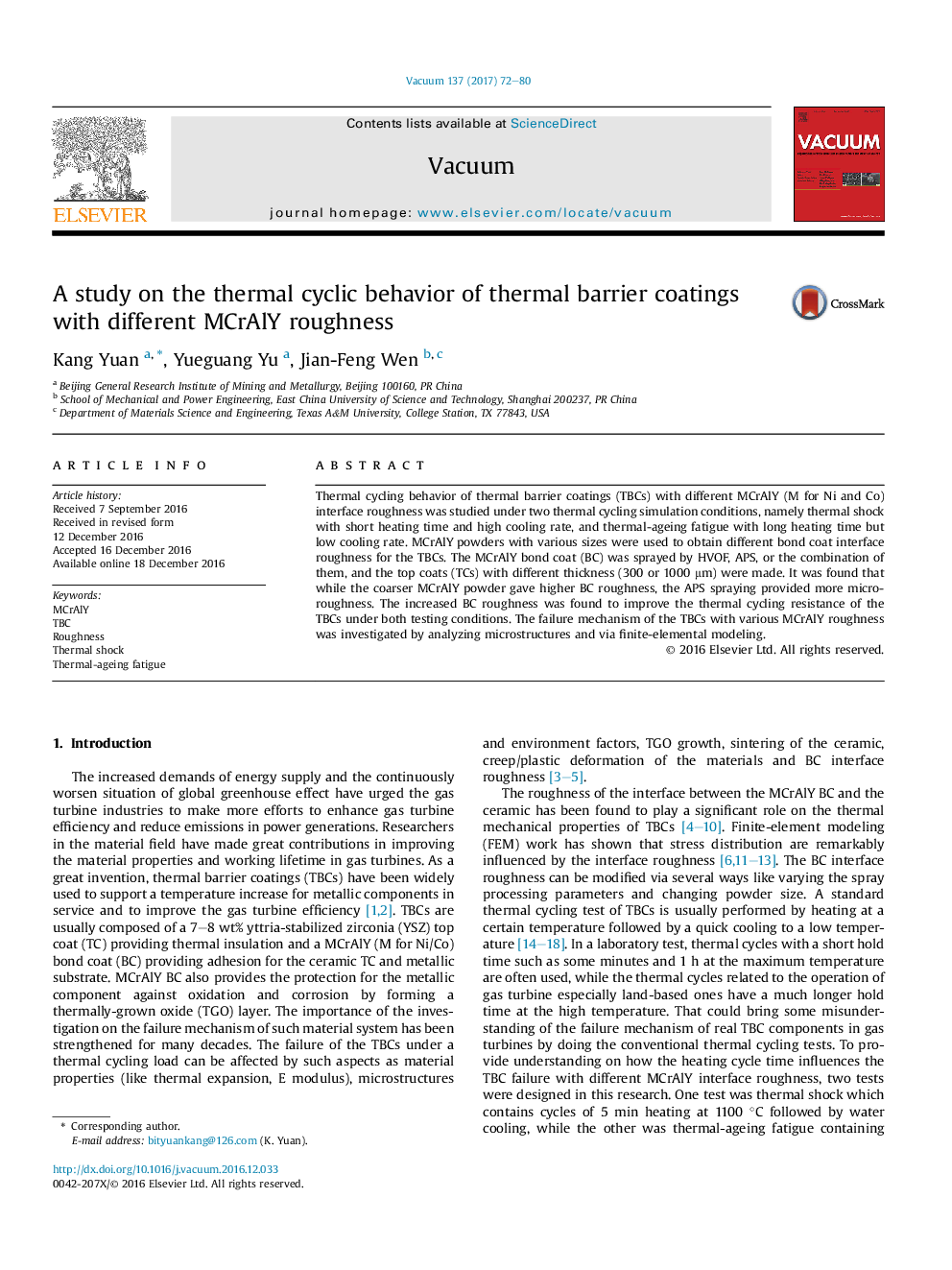| Article ID | Journal | Published Year | Pages | File Type |
|---|---|---|---|---|
| 5468271 | Vacuum | 2017 | 9 Pages |
Abstract
Thermal cycling behavior of thermal barrier coatings (TBCs) with different MCrAlY (M for Ni and Co) interface roughness was studied under two thermal cycling simulation conditions, namely thermal shock with short heating time and high cooling rate, and thermal-ageing fatigue with long heating time but low cooling rate. MCrAlY powders with various sizes were used to obtain different bond coat interface roughness for the TBCs. The MCrAlY bond coat (BC) was sprayed by HVOF, APS, or the combination of them, and the top coats (TCs) with different thickness (300 or 1000 μm) were made. It was found that while the coarser MCrAlY powder gave higher BC roughness, the APS spraying provided more micro-roughness. The increased BC roughness was found to improve the thermal cycling resistance of the TBCs under both testing conditions. The failure mechanism of the TBCs with various MCrAlY roughness was investigated by analyzing microstructures and via finite-elemental modeling.
Keywords
Related Topics
Physical Sciences and Engineering
Materials Science
Surfaces, Coatings and Films
Authors
Kang Yuan, Yueguang Yu, Jian-Feng Wen,
